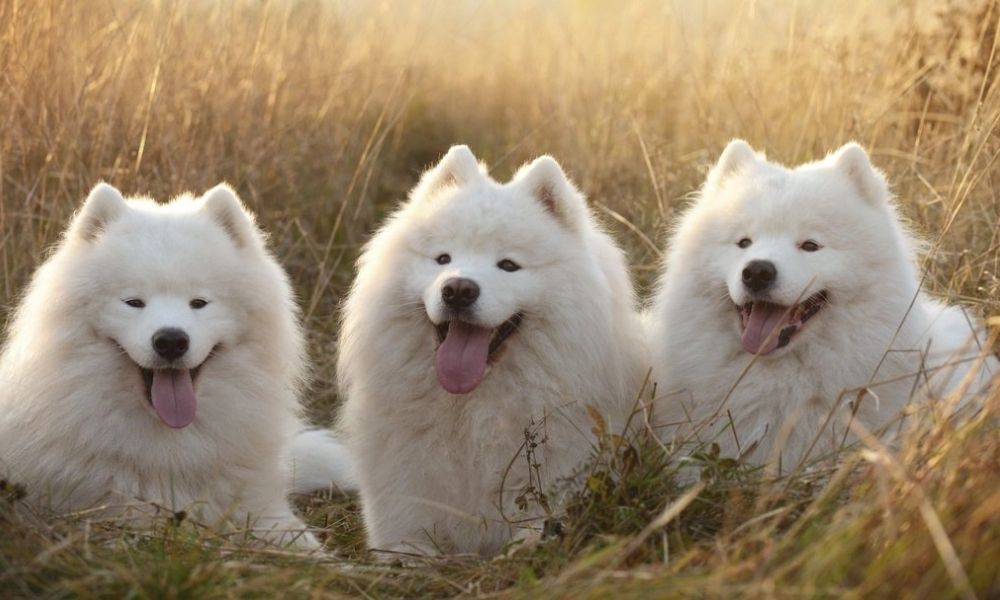How to Clean White Dog Fur Stains

Dogs with cloud-like appearances, such as white and cotton-soft fur, are inarguably some of the cutest pets. However, keeping your white dog’s fur spotless is a big challenge. Fret not! With the right pet care, you can manage those stubborn stains effectively.
Before we delve into the cleaning methods, it’s important to figure out the source of the stains on your dog’s fur. Certain types of stains may need specific treatments, and understanding their origins will help you be more cautious about what to watch out for in the future.
Before we delve into the cleaning methods, it’s important to figure out the source of the stains on your dog’s fur. Certain types of stains may need specific treatments, and understanding their origins will help you be more cautious about what to watch out for in the future.
Common Causes of White Dog Fur Stains
Tears and Saliva: These can lead to reddish-brown stains around the eyes and mouth. Tear stains are particularly common in breeds like Maltese and Poodles.
Food: Certain foods can cause discoloration if they come into contact with your dog’s fur. Foods with artificial coloring or high iron content can leave noticeable marks.
Dirt and Grime: Everyday activities can lead to dirt and mud stains, especially for active dogs that love playing outdoors.
Urine: Urine stains, often due to accidents or poor grooming, can be particularly challenging to remove.
Essential Tools for Cleaning White Dog Fur Stains
Now that you have identified the cause of the persistent stains on your dog’s fur, it’s time to gather the materials you’ll need to resolve it. It may be a hassle, but gathering about six items for effective cleaning is much better than trying to make two things work and ending up with a stain that has barely lightened. Make sure to secure the following items for spotless fur for your lovely pets!
1. Pet-Safe Shampoo: Opt for a 2-in-1 pet shampoo and conditioner for fast, easy, and convenient bathing as the whole cleaning process can be lengthy. For this, we recommend using the one from Azius Ventures as it effectively repels pesky mosquitoes, ticks, and fleas while keeping your dog’s fur healthy, soft, and shiny. It also has antifungal, antiviral, and antibacterial properties, and is made with aloe vera, coconut oil, and lavender. It doesn’t just clean but also provides protection!
2. Tear Stain Remover: Use this to target the reddish stains around the eyes.
3. Microfiber Towels: Gentle on your dog’s fur and highly absorbent.
4. Soft-Bristle Brush: Useful for gentle yet effective removal of dirt.
5. Cornstarch or Baking Soda: Natural whitening agents that can help lift stains.
6. Hydrogen Peroxide: Use with caution and in diluted form for tough stains.
Step-by-Step Guide to Cleaning Up Dog Fur Stains
Once you have secured the necessary materials, you can now start cleaning your dog’s fur stains by following these steps:
1. Wet your dog’s fur thoroughly: Apply the shampoo and lather it well. Let it sit for a few minutes before rinsing thoroughly with lukewarm water. The right shampoo ensures deep cleaning and the removal of any embedded dirt.
2. Dry the fur: After the bath, use a microfiber towel to dry your dog’s fur. Ensure the fur is completely dry to prevent any residual moisture from causing further stains. Microfiber towels are gentle on the fur and highly absorbent, making them ideal for this task.
3. Spot clean stains: Create a paste using cornstarch or baking soda mixed with water. Apply it to the stained areas and let it sit for 10-15 minutes before rinsing thoroughly. These natural agents help in lifting the stains without causing any harm to your pet's skin.
4. Tough stains: For tough stains, dilute hydrogen peroxide with water (equal parts) and apply it cautiously to the stained area using a cotton ball. Rinse thoroughly after a few minutes. Use this method sparingly to avoid irritation. Hydrogen peroxide is effective but should be used with care to avoid skin irritation.
Preventive Measures
To keep your dog’s fur looking shiny and healthy, it’s important to adopt preventive measures. Regular grooming and frequent baths with a high-quality pet shampoo and conditioner can prevent stains from setting in. Additionally, wiping your dog's face after meals and playtime can minimize the chances of stains forming.
Maintaining a clean feeding area and providing your dog with high-quality food can also reduce the risk of fur discoloration. Foods without artificial coloring and additives are less likely to cause stains.
Regular Vet Checkups
Regular visits to the vet are essential to ensure that any underlying health issues contributing to stains are addressed. Conditions like tear duct problems or skin infections should be treated promptly to prevent persistent staining.
Just like that, your pet is back to looking clean, healthy, and happy! Make sure to use preventive measures to avoid having to deal with stains again and bringing unnecessary stress to your pets by doing this process too often.
Learn more about how to keep your white fur dog clean and stain-free: https://prideandgroom.com/blogs/dog-grooming-tips-blog/grooming-white-dog-stain-free-white-dog!



